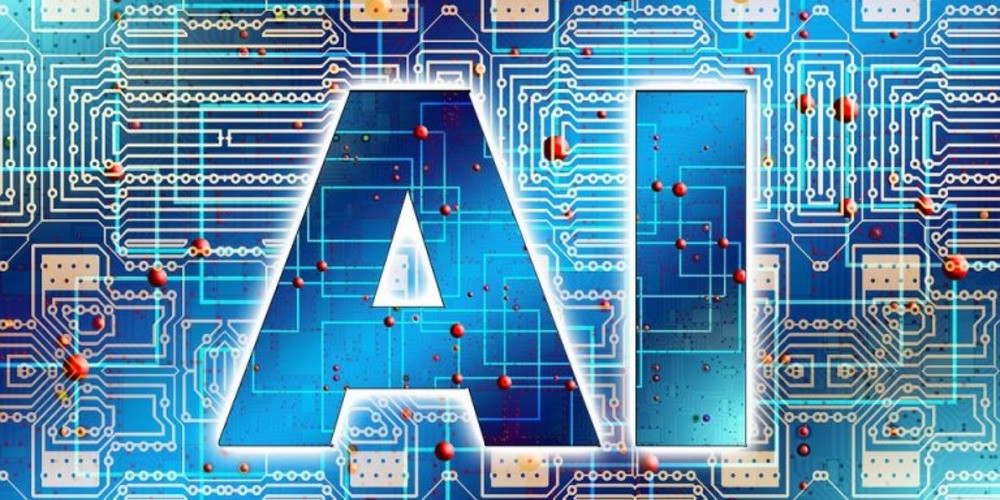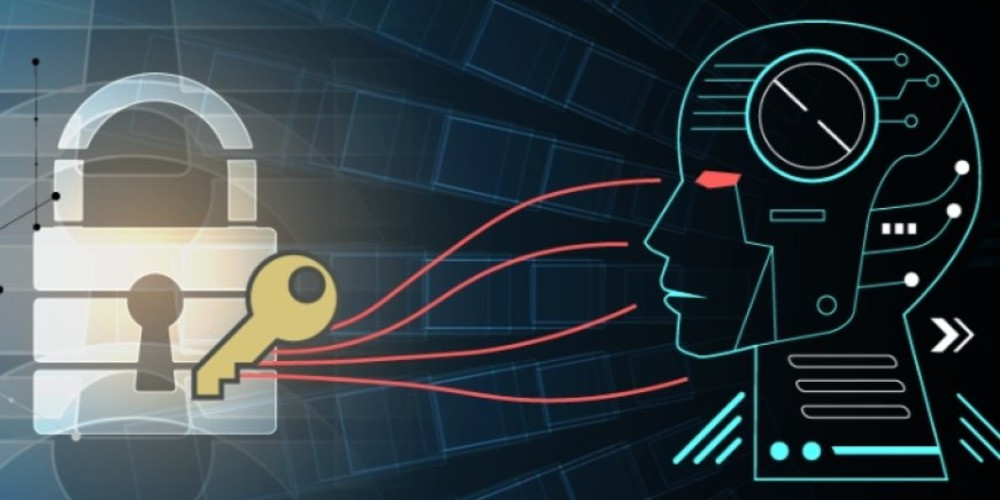Compliance and Cybersecurity in the Age of AI

Artificial Intelligence is dramatically transforming the business landscape. It streamlines operations, provides critical insights, and empowers businesses to make data-driven decisions efficiently. Utilizing machine learning, predictive analytics, and automation, AI aids in spotting trends, projecting sales, and optimizing supply chains. This results in heightened productivity and enhanced business performance. However, it does come with certain challenges.
Ransomware Threats and AI
We discussed the impact of AI on cybersecurity with Matt Hillary, Vice President of Security and CISO at Drata. According to Hillary, AI is significantly increasing the ransomware threat. Traditional strategies for propagating ransomware rely heavily on social engineering tactics such as phishing and exploiting weaknesses in externally accessible systems like Virtual Private Network (VPN) endpoints and exposed Remote Desktop Protocol (RDP). AI is enabling cyber attackers to produce highly sophisticated deceptive messages, making them more tempting to the unaware user.
Cybercriminals are leveraging AI to improve various facets of their activities, including reconnaissance and coding, which strengthens their exploitation vectors. By using AI, threat actors can efficiently analyze extensive datasets to identify weaknesses in an organization’s external systems and create tailored exploits, whether by exploiting known vulnerabilities or uncovering new ones.
Defensive and Preventative AI Solutions

On the flip side, AI is also enhancing defensive and preventative solutions in cybersecurity. AI-driven systems can sift through extensive datasets to identify patterns that signal potential cyber threats, such as malware, phishing schemes, and irregular network behavior. Large Language Models (LLMs) can identify indicators of compromise or other threats more quickly and accurately than traditional or manual review methods, allowing for a faster response and mitigation.
AI models can also review activities to understand the normal behavior of users and systems within a network, enabling them to detect deviations that may indicate a security incident. This method is especially useful for detecting insider threats and complex attacks that manage to bypass conventional signature-based detection systems.
Automating Governance and Compliance
AI tools have the potential to significantly enhance governance and compliance with evolving regulations and industry standards. By continuously monitoring systems and detecting anomalies, AI can respond to indicators of security incidents or misconfigurations that could result in non-compliance. These tools help organizations stay current and compliant by keeping up with evolving governance regulations in real-time.
Moreover, AI algorithms can analyze vast amounts of regulatory data, reducing the risk of human error associated with manual efforts. This leads to more accurate assessments of compliance status and reduces the likelihood of regulatory violations, providing a more robust compliance framework.
Best Practices for Protecting Against AI Threats

To protect against evolving AI threats, leaders should implement several practical and best practices. Comprehensive education for cybersecurity teams is crucial to effectively secure AI used by employees and AI integrated into existing platforms or systems. This education should cover not only the application but also the underlying technology driving AI capabilities.
Organizations should deploy phishing-resistant authentication methods to safeguard against phishing attacks targeting authentication tokens used for accessing environments. Additionally, policies, training, and automated mechanisms should be established to equip team members with the knowledge to defend against social engineering attacks.
Consistently strengthening the organization’s internet-facing perimeters and internal networks is essential to diminish the effectiveness of such attacks, ensuring a more secure environment against AI-driven threats.
Ethical Considerations and Practical Safety Actions
Ethical considerations are paramount when it comes to AI. Companies should establish governance structures and processes to oversee AI development, deployment, and usage. This includes appointing individuals or committees responsible for monitoring ethical compliance and ensuring alignment with organizational values. These governance structures should be extensively documented and understood across the organization.
Transparency is also crucial. Organizations should document AI algorithms, data sources, and decision-making processes, ensuring that stakeholders understand how AI systems make decisions and their potential impacts on individuals and society. At Drata, responsible AI principles have been developed to encourage robust, trusted, ethical governance while maintaining a strong security posture.
Key principles include privacy by design, which involves using anonymized datasets to safeguard privacy with strict access control and encryption protocols, alongside synthetic data generation to simulate compliance scenarios. Fairness and inclusivity are promoted by removing inherent biases through detailed curation and continuous monitoring of models to ensure no unfair outcomes. Safety and reliability are ensured through rigorous testing and 360-degree human oversight, providing users with total confidence in AI solutions.
The Future of AI Threats

The future holds both challenges and opportunities in the realm of AI threats. With increasing accessibility and potency of AI, malicious actors will inevitably exploit it to orchestrate highly targeted, automated, and elusive cyberattacks across multiple domains. These attacks will evolve in real-time, enabling them to evade traditional detection methods.
Additionally, the rise of AI-generated deep-fakes and misinformation poses significant threats to individuals, organizations, and the democratic process. Fake visuals, audio, and text are becoming increasingly sophisticated, making it difficult to distinguish between fact and fiction.
Advanced AI-Driven Security Solutions
Despite the challenges, the future of advanced AI-driven security solutions is promising. AI will bolster cybersecurity resilience through proactive threat intelligence, predictive analytics, and adaptive security controls. By using AI to foresee and adjust to emerging threats, organizations can maintain a proactive stance against cyber criminals, mitigating the impact of attacks.
Third-party risk management is also critical in addressing AI-powered vulnerabilities. Security teams need comprehensive tools for identifying, assessing, and continuously monitoring risks, integrating them with internal risk profiles. This holistic approach ensures a unified, clear view of potential exposures across the entire organization, effectively managing third-party risks associated with AI.
Latest posts
See more-
![The Last of Us Part II: In-Depth Character Analysis and Storyline Exploration]() Editor’s Choice
2024-08-11
The Last of Us Part II: In-Depth Character Analysis and Storyline Exploration
The Last of Us Part II is an action-adventure video game that has gained significant popularity since its inception. Developed with immense creative prowess by...
Editor’s Choice
2024-08-11
The Last of Us Part II: In-Depth Character Analysis and Storyline Exploration
The Last of Us Part II is an action-adventure video game that has gained significant popularity since its inception. Developed with immense creative prowess by...
-
![CrossCode Developer Announces Alabaster Dawn, Enters Early Access in Late 2025]() News
2024-08-12
CrossCode Developer Announces Alabaster Dawn, Enters Early Access in Late 2025
In 2021, Radical Fish Games initially introduced a new action RPG titled Project Terra. Now, they have officially named it Alabaster Dawn and announced that...
News
2024-08-12
CrossCode Developer Announces Alabaster Dawn, Enters Early Access in Late 2025
In 2021, Radical Fish Games initially introduced a new action RPG titled Project Terra. Now, they have officially named it Alabaster Dawn and announced that...
-
![Alabaster Dawn Planned to Have 30-60 Hours of Playtime, Demo Launching in Early 2025]() News
2024-08-13
Alabaster Dawn Planned to Have 30-60 Hours of Playtime, Demo Launching in Early 2025
Radical Fish Games has made an exciting announcement regarding their upcoming action RPG, Alabaster Dawn, which is set to enter early access in 2025. In...
News
2024-08-13
Alabaster Dawn Planned to Have 30-60 Hours of Playtime, Demo Launching in Early 2025
Radical Fish Games has made an exciting announcement regarding their upcoming action RPG, Alabaster Dawn, which is set to enter early access in 2025. In...
Latest Reviews
See more-
![]() Action
Cult of the Lamb
Action
Cult of the Lamb
-
![]() Action
WILD HEARTS™
Action
WILD HEARTS™
-
![]() Casual
Gacha Club
Casual
Gacha Club
-
![]() Action
Call of Duty®: Warzone™ 2.0
Action
Call of Duty®: Warzone™ 2.0
-
![]() Action
Gacha Cute
Action
Gacha Cute
-
![]() Action
Cuphead - The Delicious Last Course
Action
Cuphead - The Delicious Last Course










